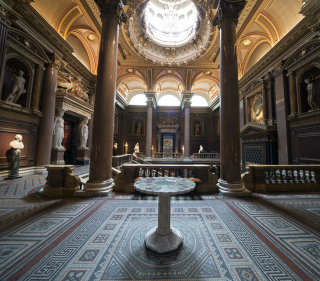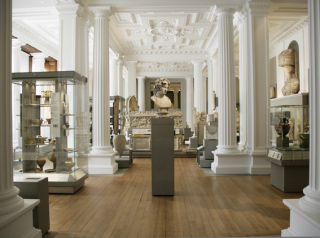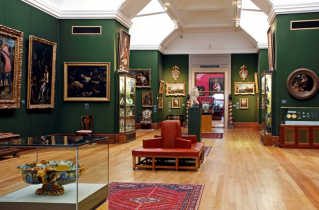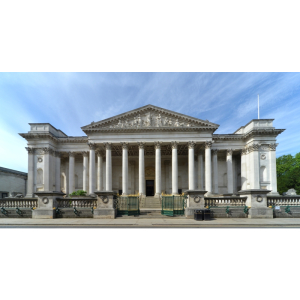-
Trumpington Street, Cambridge, Cambridgeshire
CB2 1RB
Located in the heart of Cambridge, the Museum is one of the most iconic buildings in the Cambridge cityscape, its monumental neo-classic facade and columns just a short walk away from the central colleges and the River Cam. The Museum was founded in 1816 by the 7th Viscount Fitzwilliam of Merrion who bequeathed his vast collections of art, music and books to the University of Cambridge.
Viscount Fitzwilliam felt strongly that the University should have its own museum, not only for the display of works of art, but also with its own library. A grand sum of £100,000 was provided to build an “unforgettable monument”, a university museum which would be a place of learning as well as one of the most magnificent galleries of its day.
Viscount Fitzwilliam was an alumnus of Trinity Hall College in Cambridge. A keen collector throughout his life, his passion for art began at home in his family’s collections; amongst his bequest of 144 pictures were fine Dutch paintings inherited from his maternal grandfather. To this he added exceptional Renaissance masterpieces he had purchased by Titian, Veronese and Palma Vecchio which form the basis of the Museum’s fine art collection today.
During a lifetime of collecting he filled more than 500 folio albums with engravings forming a vast collection of prints by the most celebrated artists, including a series of etchings by Rembrandt that was unsurpassed in England at that time.
His particular passion was for literary and musical manuscripts. His library held 130 medieval manuscripts and a collection of autographed music by Handel, Purcell and other composers which has guaranteed the Museum a place among the great music libraries of the world.
The Museum building was opened to the public in 1848 and since then the Fitzwilliam has continued to grow both in size and collections. Today the Museum has one of the finest collections of paintings, drawings and prints in Britain, with famous works by Rubens, Breughel, Constable, Monet and Picasso to name but a few.
It is also known for its remarkable collections from the ancient world, with artifacts from ancient Egypt, Greece, Rome, Cyprus and the ancient near east.
Throughout the Museum there are significant collections of Asian art, illuminated manuscripts, and outstanding collections of applied arts, pottery, porcelain and medieval coins.
Most importantly, the Museum is still very much a part of the University and, as well as playing a big part for the University’s research for the arts, remains free for anyone to visit and enjoy.


For more details, see:
http://www.fitzmuseum.cam.ac.uk/
fitzmuseum-enquiries@lists.cam.ac.uk


